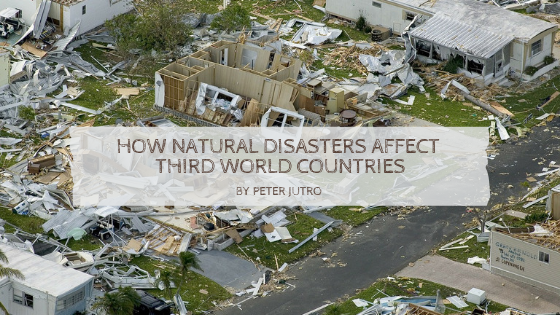Over the past 20 years, 7,000 natural disasters have killed 1.35 million worldwide. Around 90% of those deaths occurred in lesser developed countries which lack the resources to protect vulnerable populations from flooding, earthquakes, tsunamis, and other disasters. The resulting devastation only drives developing nations further into poverty. Recovery is slow, and disasters are unrelenting. As a result, affected areas are often forced into a state of perpetual recuperation, with jobs and homes half-rebuilt after one catastrophe, and leveled again when the next hits.
It’s not a coincidence that Haiti, one of the world’s poorest countries, has been singularly ravaged by natural disaster. Hurricane floodwaters have swallowed villages and washed out Haiti’s farmland, killing thousands at a time and leaving many more destitute. In 2010, a magnitude 7 earthquake annihilated much of Port-au-Prince, the country’s capital. In the aftermath–and amid an outbreak of cholera–the city’s streets and hospitals alike overflowed with 1 million newly homeless. According to a study by the U.N. Office for Disaster Risk Reduction (UNISDR), between 1996 and 2015, Haiti suffered more casualties from disaster than any other country.
Disasters can also wreak unique havoc upon women and the elderly in developing countries. The International Labor Organization believes that women have less access to resources following a disaster, as female employment opportunities in third-world nations are often limited, and women are expected to handle domestic tasks and serve as caregivers for children and older family members. In addition, risks of sexual violence and human trafficking are multiplied in the chaos after a catastrophe. The elderly too, can be disproportionately affected, as disasters may render them isolated and physically unable to contact other survivors. Over 50% of the casualties following an earthquake in Kobe, Japan in 1995 were senior citizens, despite the fact that the elderly only comprised 14% of the population.
To manage damage and reduce the death count from disasters, it’s imperative that developing countries dedicate whatever resources they can to developing early warning strategies and evacuation plans. In countries where industry is growing quickly, the cost of living can force the poorest citizens to take up residence around storm-vulnerable coastlines and riverbanks, steep hillsides and other geographical features that amplify the effects of disaster. In these places –where a lack of finances often limits the practicality of protective measures such as flood barriers and sturdy buildings made of earthquake proof materials, having a process in place to provide citizens with information on to how to react when disaster strikes, can easily mean the difference between life and death.

